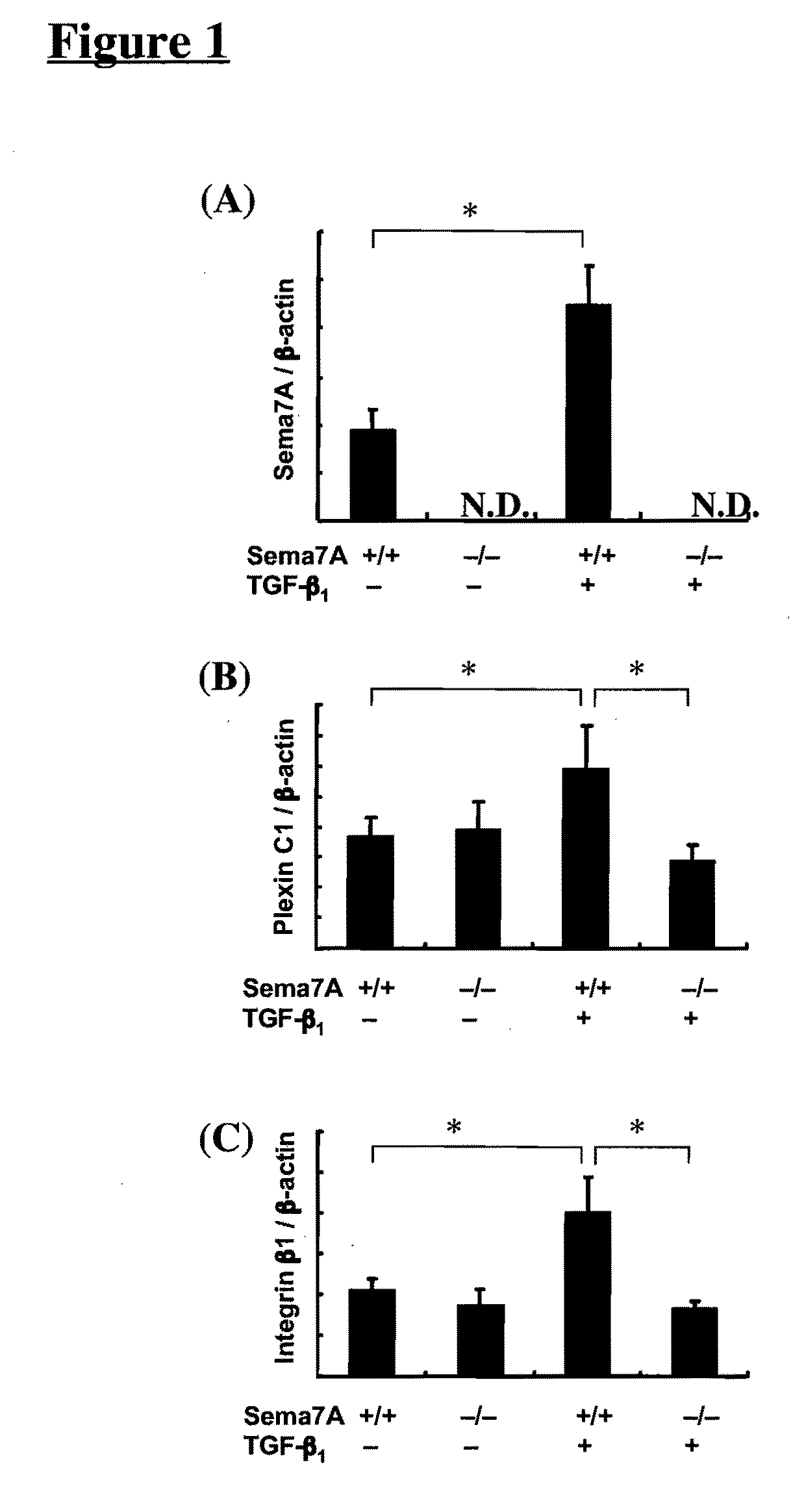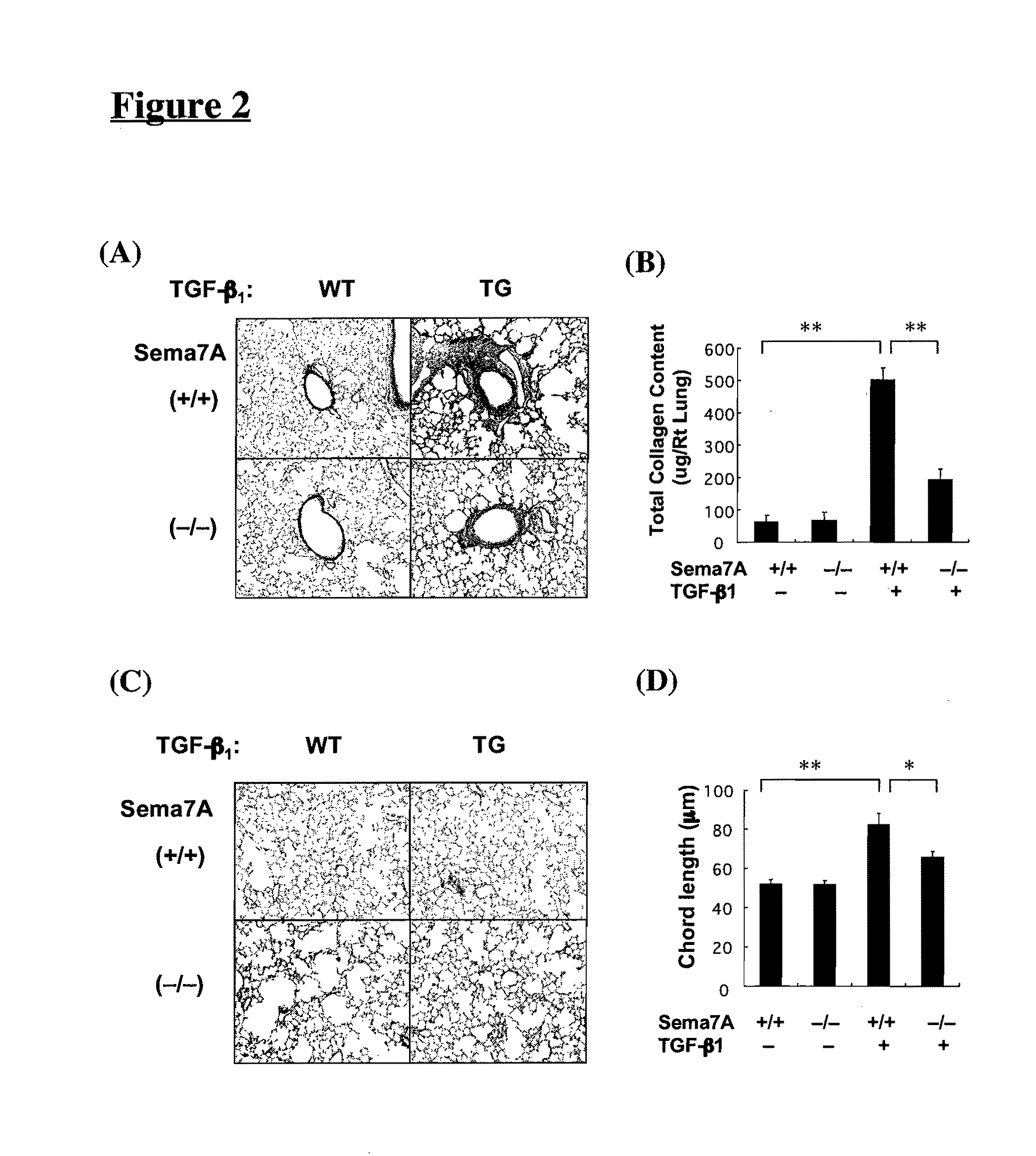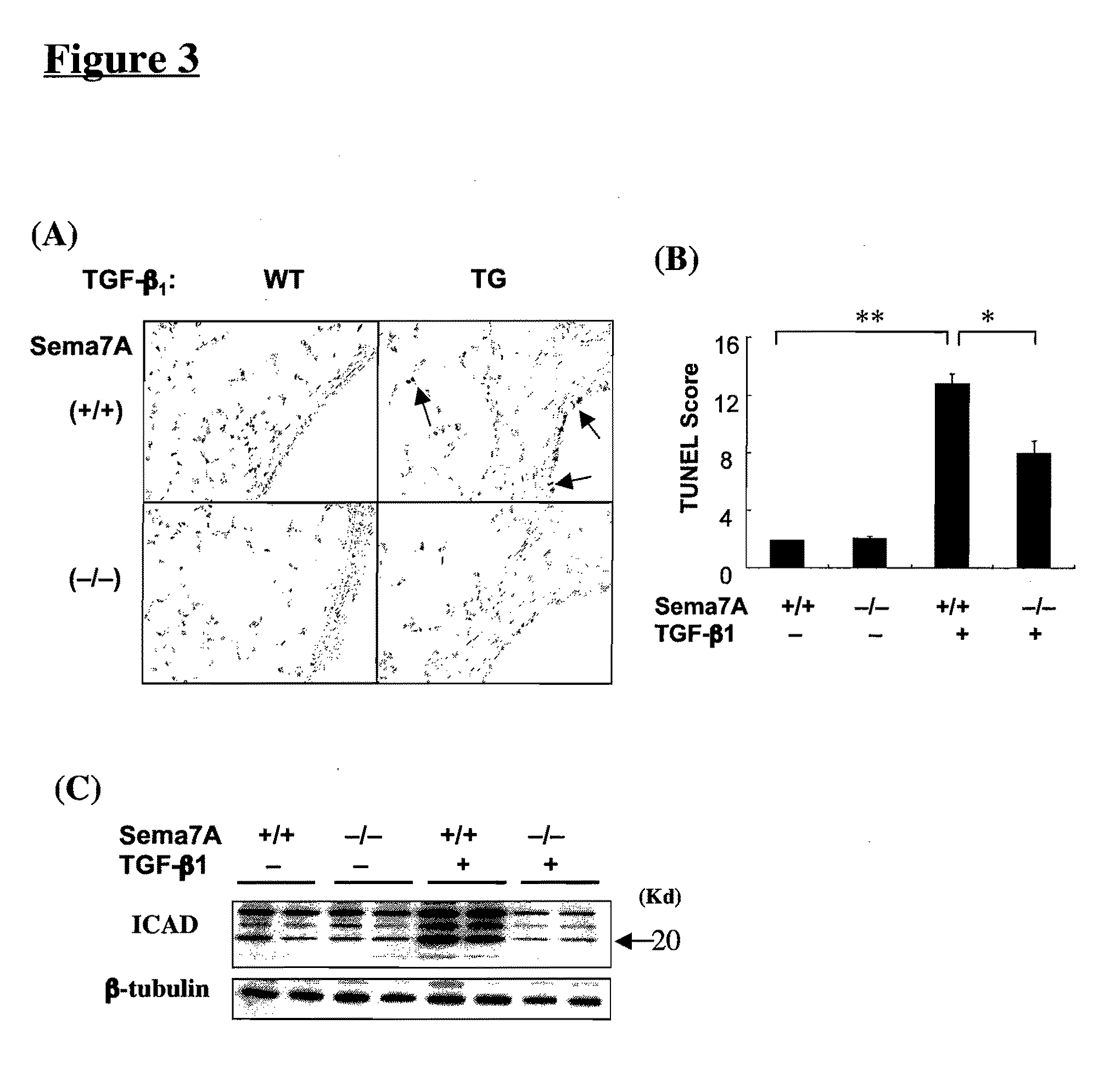Semaphorin 7A Plays a Critical Role in TGF-Beta1-Induced Pulmonary Fibrosis and Alveolar Destruction
a technology of tgf-beta1 and pulmonary fibrosis, which is applied in the direction of antibody medical ingredients, peptide/protein ingredients, drug compositions, etc., can solve the problems of patient morbidity and mortality, and the use of tgf-/sub>1 to mediate these tissue responses, which have not been adequately defined, so as to prevent cellular dna damage and apoptosis, inhibit fibrosis, and enhancing collagen accumulation
- Summary
- Abstract
- Description
- Claims
- Application Information
AI Technical Summary
Benefits of technology
Problems solved by technology
Method used
Image
Examples
experimental example 1
TGF-β1 Regulation of the SEMA 7A System
[0197]To examine the possibility that SEMA 7A contributes to TGF-β1-induced responses in the lung, studies were undertaken to determine if the expression of SEMA 7A or its putative receptors are regulated by transgenic TGF-β1. This was done by comparing the levels of SEMA 7A, plexin C1 and β1 integrins in lungs from transgene (Tg) negative (−) and Tg (+) mice at various times after Tg activation.
[0198]These studies demonstrate that TGF-β1 is a potent stimulator of SEMA 7A, plexin C1 and β1 integrin mRNA accumulation in lungs from dox-treated Tg mice (FIG. 1). This induction was seen after as little as 2 days of dox administration and persisted throughout the 28-day study interval (FIG. 1). Interestingly, the data also demonstrate that the induction of plexin C1 and β1 integrins was SEMA 7A-dependent because TGF-β1 did not induce either SEMA 7A receptor in SEMA 7A null mice (FIGS. 1B and 1C).
[0199]Thus, these studies demonstrate that TGF-β1 is a...
experimental example 2
Role of SEMA 7A in TFG-β1-Induced Fibrosis
[0200]To determine if the fibrotic effects of TGF-β1 are altered in the absence of SEMA 7A, biochemical (Sircol) and histologic approaches were used to quantitate the collagen in lungs from Tg mice with WT and null SEMA 7A loci.
[0201]In accord with previous studies (Lee et al., 2004, supra), transgenic TGF-β1 caused a significant increase in lung collagen content in mice that expressed SEMA 7A normally (p1-induced collagen accumulation was decreased by 80.1+8.5% (p<0.0001) in SEMA 7A null versus WT animals (FIG. 2B).
[0202]These studies demonstrate that SEMA 7A plays an important role in the pathogenesis of TGF-β1-induced pulmonary fibrosis in the lung.
experimental example 3
Role of SEMA 7A in Alveolar Remodeling
[0203]In addition to inducing tissue fibrosis, TGF-β1 induces alveolar remodeling with septal destruction and an increase in alveolar cord length (Lee et al., 2004, supra). To define the role(s) of SEMA 7A in these responses, the alveoli of Tg mice with WT and null SEMA 7A loci were compared.
[0204]In accord with previous reports (Lee et al., 2004, supra), an increase in lung destruction was readily apparent in Tg mice that produced SEMA 7A normally (FIGS. 2C and 2D). Interestingly, null mutations of SEMA 7A caused a significant decrease in alveolar remodeling that was apparent in histologic and morphometric evaluations (FIGS. 2C and 2D). Overall, a null mutation of SEMA 7A caused a 72.3±8.6% decrease in the TGF-β1-induced increase in alveolar chord length in mice on dox water for 2 weeks (p<0.002).
[0205]Thus, SEMA 7A plays an important role in the pathogenesis of TGF-β1-induced alveolar remodeling in the lung.
PUM
 Login to View More
Login to View More Abstract
Description
Claims
Application Information
 Login to View More
Login to View More - R&D
- Intellectual Property
- Life Sciences
- Materials
- Tech Scout
- Unparalleled Data Quality
- Higher Quality Content
- 60% Fewer Hallucinations
Browse by: Latest US Patents, China's latest patents, Technical Efficacy Thesaurus, Application Domain, Technology Topic, Popular Technical Reports.
© 2025 PatSnap. All rights reserved.Legal|Privacy policy|Modern Slavery Act Transparency Statement|Sitemap|About US| Contact US: help@patsnap.com



